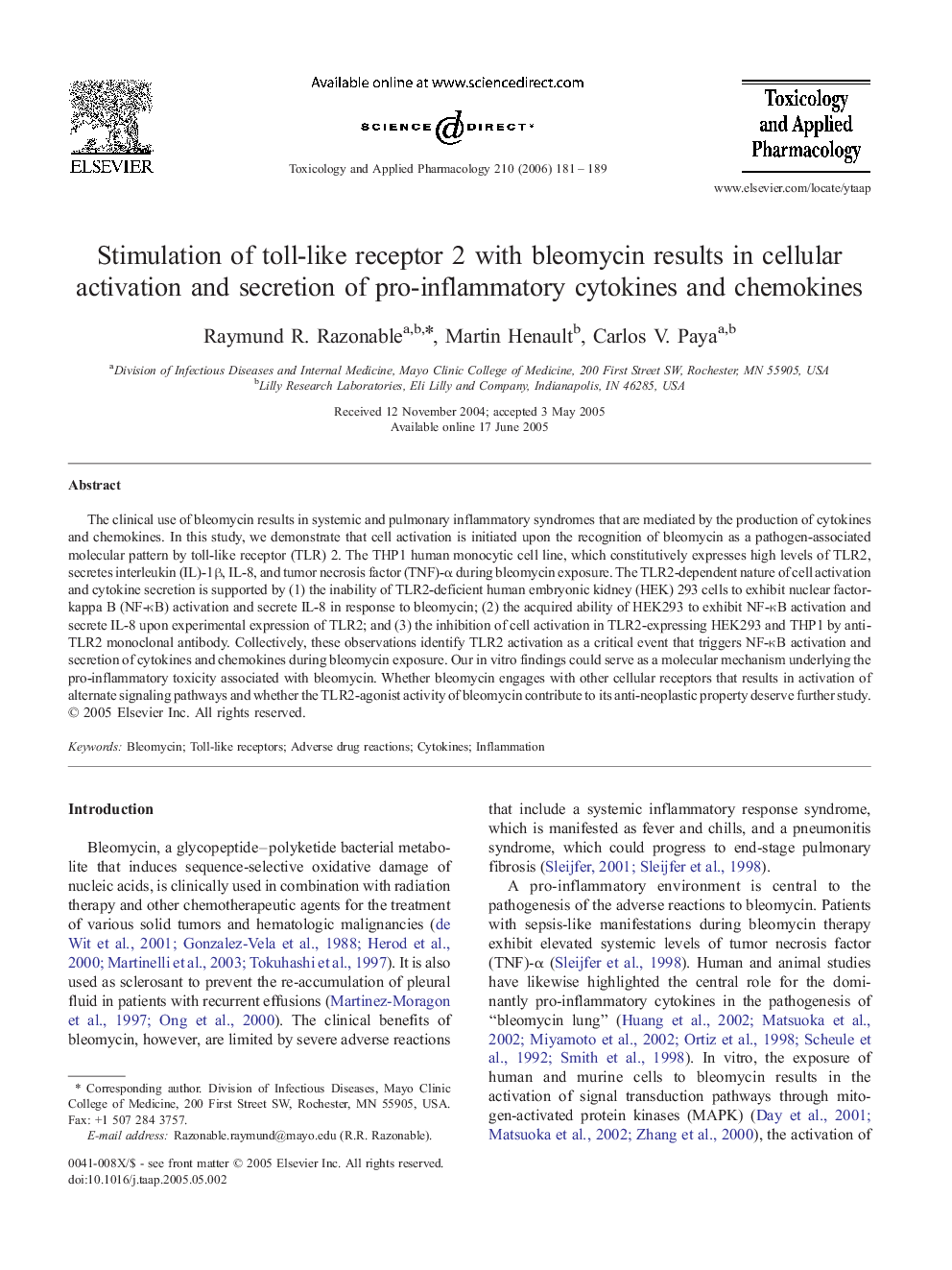| Article ID | Journal | Published Year | Pages | File Type |
|---|---|---|---|---|
| 2572042 | Toxicology and Applied Pharmacology | 2006 | 9 Pages |
The clinical use of bleomycin results in systemic and pulmonary inflammatory syndromes that are mediated by the production of cytokines and chemokines. In this study, we demonstrate that cell activation is initiated upon the recognition of bleomycin as a pathogen-associated molecular pattern by toll-like receptor (TLR) 2. The THP1 human monocytic cell line, which constitutively expresses high levels of TLR2, secretes interleukin (IL)-1β, IL-8, and tumor necrosis factor (TNF)-α during bleomycin exposure. The TLR2-dependent nature of cell activation and cytokine secretion is supported by (1) the inability of TLR2-deficient human embryonic kidney (HEK) 293 cells to exhibit nuclear factor-kappa B (NF-κB) activation and secrete IL-8 in response to bleomycin; (2) the acquired ability of HEK293 to exhibit NF-κB activation and secrete IL-8 upon experimental expression of TLR2; and (3) the inhibition of cell activation in TLR2-expressing HEK293 and THP1 by anti-TLR2 monoclonal antibody. Collectively, these observations identify TLR2 activation as a critical event that triggers NF-κB activation and secretion of cytokines and chemokines during bleomycin exposure. Our in vitro findings could serve as a molecular mechanism underlying the pro-inflammatory toxicity associated with bleomycin. Whether bleomycin engages with other cellular receptors that results in activation of alternate signaling pathways and whether the TLR2-agonist activity of bleomycin contribute to its anti-neoplastic property deserve further study.
